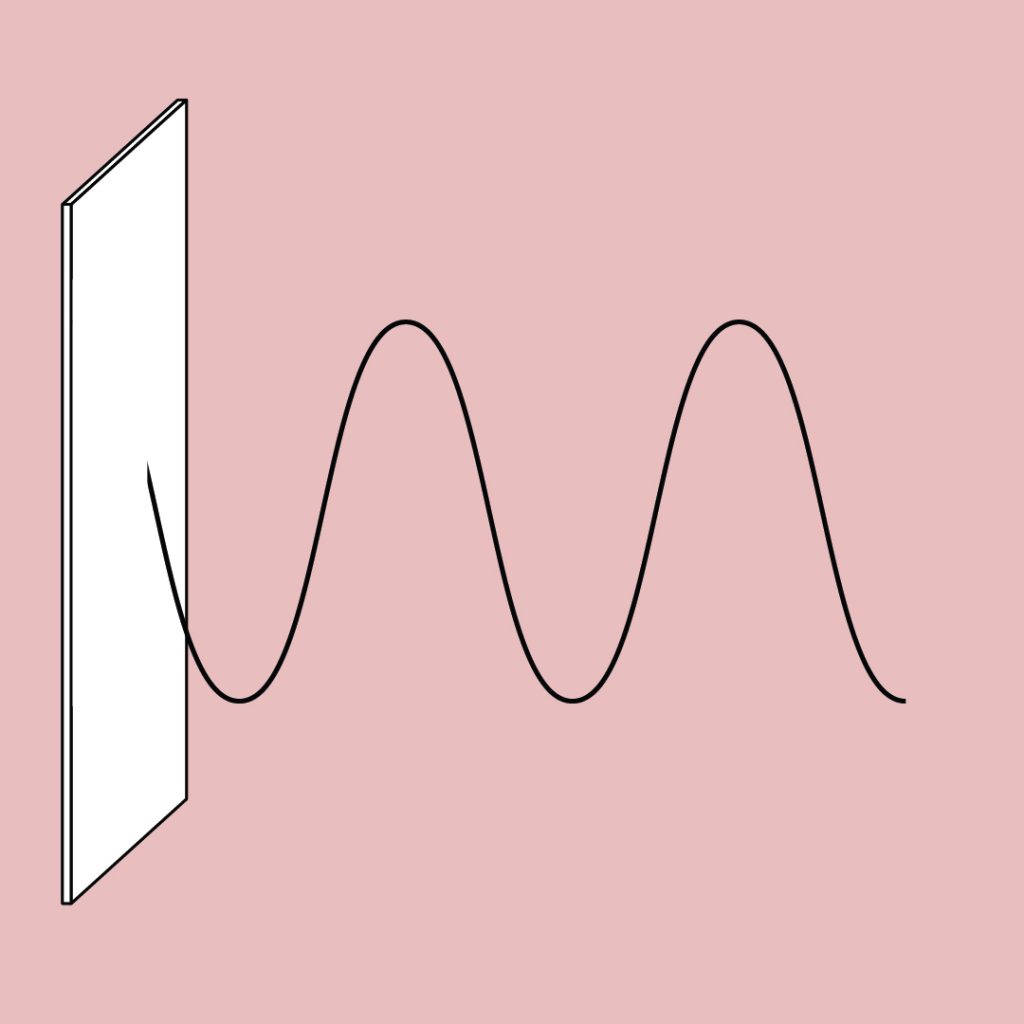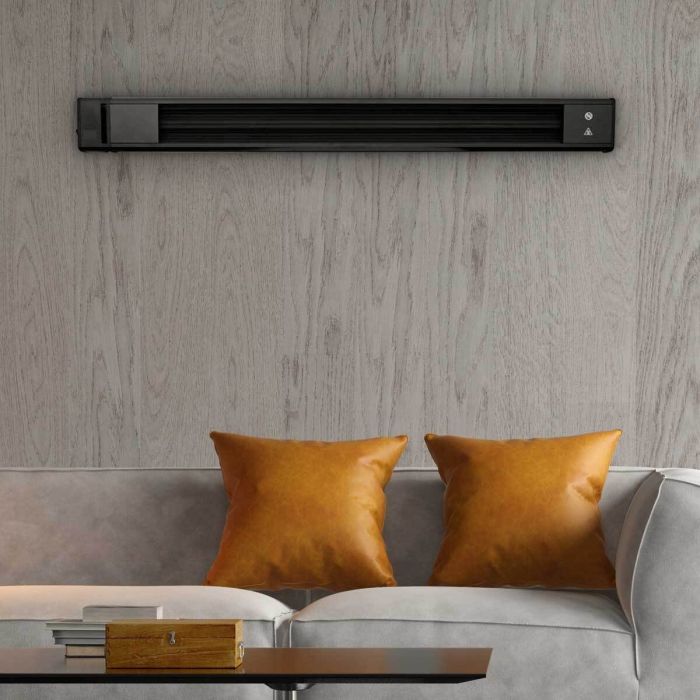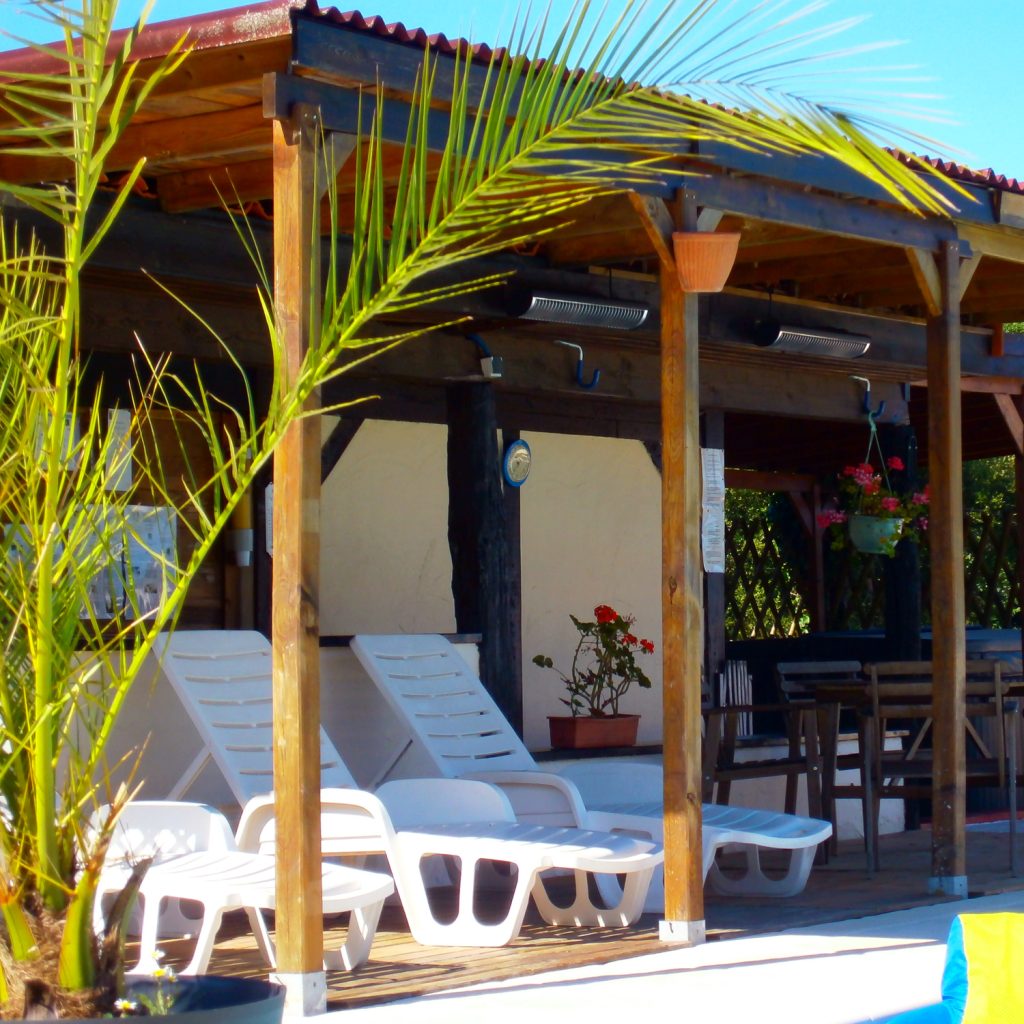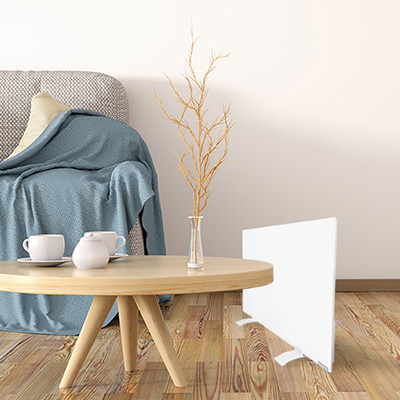Poor insulation leads to a variety of problems in both domestic and commercial properties. Cold walls and floors, problems with damp and condensation and draughtiness are common issues. Unfortunately, heat loss is also a key signifier of a poorly insulated home – with windows and doors being usual heat loss suspects, allowing warmth to escape and draughts to flow freely. Whilst insulating your property to a better standard would nip the problem in the bud, it’s not always the most convenient port of call. Switching to a highly efficient heating source that’s unaffected by airflow, like far infrared heat, is a brilliant alternative – one that’ll keep your poorly insulated property warm all year long.
What is far infrared?
Far infrared is a wavelength on the electromagnetic spectrum. It’s a form of radiation, but don’t fret – it’s completely harmless. In fact, we’re surrounded by infrared radiation all the time, as it’s the same kind of heat our bodies naturally absorb and emit.
Far infrared has a low frequency and a long wavelength, which means it has a lower level of transmission than the other two forms of infrared, but is more easily absorbed by skin tissue. Its warmth is able to be transported quickly around the body, making it highly efficient, as less power is required to heat users effectively.
Going further, researchers have noted that far infrared is the only form of radiant warmth that’s able to be perceived by the human body as heat, as it travels below the skin’s surface to warm us on a more thorough level. In other words, the type of heat it produces is gentle, not overwhelming, and remains stable in solid objects for longer.

How do far infrared heaters work?
Infrared heaters work by converting electricity into radiant heat. This heat then travels outwards in a wave, directly towards the people and objects in its path, without warming the air in between. It’s an uninterrupted transfer: there’s no middleman.
Heating people, objects, walls and surfaces, infrared heat is unaffected by the ambient temperature in a room, which is why they’re ideal for poorly insulated properties. Heating via infrared warmth builds ‘thermal mass’ – objects store the warmth, not the air. You can even open a window and this warmth will remain stable.
Which locations do far infrared heaters suit?
Far infrared works best indoors. Due to its low frequency, placing a far infrared heater outdoors will unfortunately have little effect – it is not powerful enough to outweigh forceful winds and bitter temperatures. The good news is, as long as it’s indoors, there’s pretty much no other exceptions. Open plan kitchens, workshops, garages, bedrooms and even bathrooms with the correct unit can benefit from the energy efficient warmth provided by a far infrared heater. Whilst they are perfect as principal heating solutions, there’s even options appropriate for supplementary heating if required.
Far infrared: top 3 benefits

- 360° heat redistribution
Sinking into walls and objects themselves, infrared heat is able to redistribute warmth back into spaces for total 360° warmth. Keeping walls warm also has the added bonus of minimising mould and damp within a room, as it reduces any stark differences in temperature between them and the air. Check out our dedicated blog for more info on how infrared heating works to reduce mould in properties here.
- Zero maintenance
All electric heaters, including far infrared heaters, benefit from zero required maintenance. As they don’t connect to a fuel source like gas or oil, there’s no need for an annual checkup to ensure the unit is operating as it should be. Far infrared heaters in particular are solid state units, meaning there’s no moving of tiny parts inside the heater – minimising the potential for wear-and-tear damage. The only upkeep we recommend is giving the heater a dust and a wipe with a dry cloth every so often.
- Installation: seamless and convenient
There’s various installation options on offer with our range of far infrared heaters. Most can be installed high up on walls, keeping them out of sight and maximising floor and wall space below. Some can even be installed on ceilings, like our Opus and Accent range – an ideal option for keeping your heating tucked away. Some units are even able to be installed DIY, as they simply need mounting appropriately and plugging into a standard 3-pin socket in your home. For a totally wireless look, though, hardwiring is your best bet.
Poorly insulated buildings: our far infrared recommendations
The best infrared heater for domestic use: The Ecostrad Thermostrip

Best for: Bedrooms, home offices, kitchens, open plan spaces
Taking versatility to the next level, Ecostrad’s Thermostrip is an ideal choice for many interior locales that struggle to retain heat. Coming in a choice of three wattages (1800w, 2400w, and 3200w), the Thermostrip provides reliable far infrared heating to poorly insulated properties between 4.5 and 18m². The two lower wattages in the range are also DIY compatible, so your unit can be set up in a flash, whereas the 3200w version will need hardwiring into your mains by an electrician.
Control options on offer: Basic on/off functionality, but with the ability to be paired with a separate controller, like the Herschel iQ, for more detailed, on-the-go management.
The best infrared heater for commercial use: Herschel Aspect XL

Best for: Garages, workshops, warehouses, churches, corporate meeting rooms
Excellent for large, open spaces with a large amount of airflow, like many commercial buildings, Herschel’s Aspect uses the heat-retaining properties of ceramic stone to lock in warmth and deliver a superior user experience. Heating poorly insulated indoor spots of up to 9m², the Herschel Aspect is mountable to walls and awnings, keeping it out of direct eyeline. Slick and professional, the Aspect produces zero visible light when in operation, and as its ceramic elements only take around 5 minutes to warm up, customers, staff and guests are made comfortable quickly.
Control options on offer: When installing indoors, we highly recommend pairing this heater with the Herschel iQ thermostatic controller, which will provide you with more precision control over heat usage, including WiFi app control.
The best infrared heater for supplementary use: Herschel Select Under Desk Heater

Best for: anywhere that requires additional heat. Offices, living rooms, bedrooms, conservatories – anywhere really!
We all have those spots in our homes that could do with being a little warmer. If your property is especially poorly insulated, it’s likely you have a good few of these. Let us introduce Herschel’s Select Under Desk Heater: a freestanding infrared panel designed to direct extra heat exactly where it’s needed. Despite its name, its placement is not limited to underneath desks – it’s a perfect addition to living rooms, bedrooms and conservatories alike. Due to its simple plug-in installation and freestanding feet, setting this handy heater up within minutes is completely straightforward. Wave goodbye to chilly ankles and feet and hello to all-day, spot directed warmth.
Control options on offer: Pairing with the Smart Life app, in-depth programming and minute-by-minute control is all done from the ease of your smartphone when connected to WiFi. With Amazon Alexa and Google Home voice compatibility built-in, changing temperatures can be done without even lifting a finger.
Give poorly insulated homes a boost with infrared
Whilst improving the insulation levels in your property can be an expensive and time-consuming job, changing the way you heat it doesn’t have to be. Unaffected by airflow, draughts and cold spots, infrared heat bypasses the air to warm you and your surroundings thoroughly. To browse our wide range of infrared heating solutions, including the above models, take a look at our website today. For a more personalised experience, our friendly customer service team are always on-hand to help.

